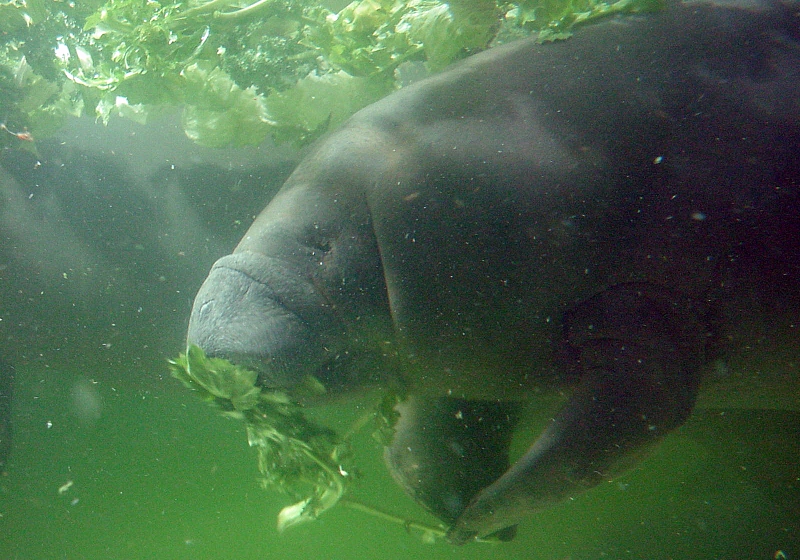An adult West Indian Manatee with calf [Source]
The West Indian Manatee is one of 3 living manatee species, and one of 4 living species in the mammalian order Sirenia, which also includes the Dugong (Dugong dugon). These aquatic herbivores are thought to be most closely related to the elephant and hyrax, having evolved from land mammals a little over 60 million years ago.
Signs of their terrestrial ancestry include the toenails still present on their front flippers. [Source]
These large animals (known to some as "sea cows") need to eat a huge quantity of aquatic vegetation, and it appears the oil spill could harm them by damaging the seagrass beds they rely on, in addition to whatever harmful effects might occur by ingesting or becoming covered in the oil.
To make matters worse, the late cold snap in the south eastern U.S. this winter has already taken a toll on the population. According to the Save the Manatee Club of Florida:
[The BP spill] is especially troubling since it comes on the heels of the worst manatee winter die-off ever experienced, with over 500 total manatees dead already this year.You can read more about Manatees and Dugongs on the Sirenian International website and from the Save the Manatee Club. You can see more images of T. manatus from the wikimedia commons.








0 comments:
Post a Comment